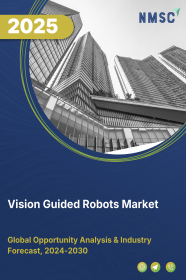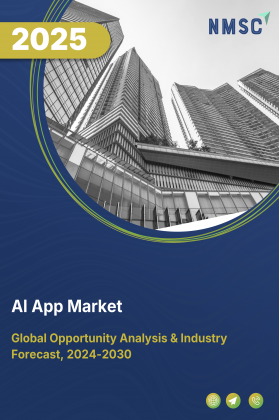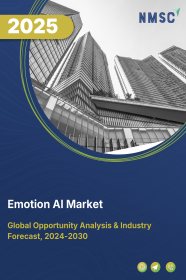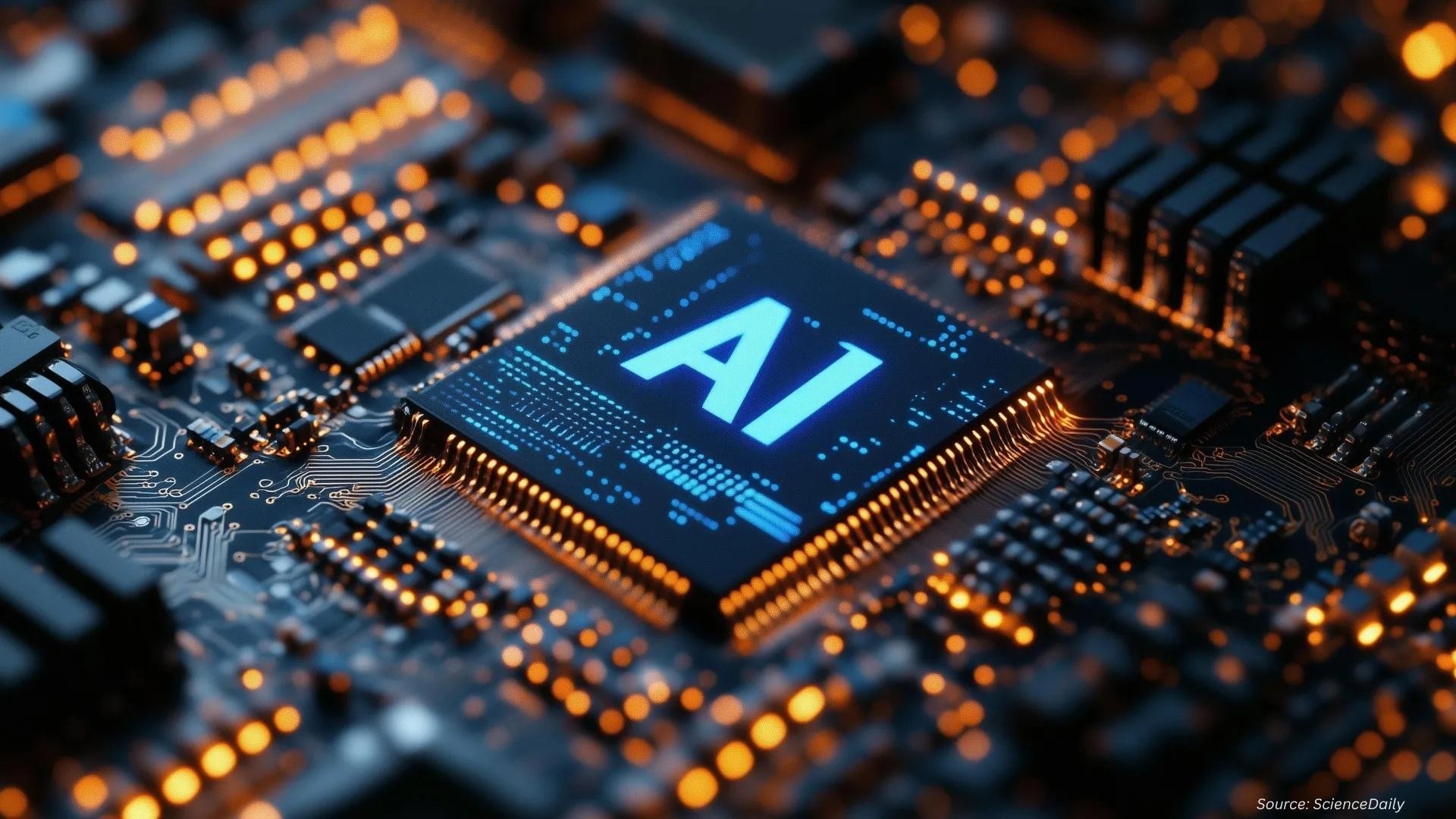
Vision Guided Robots Market by Component (Hardware, Software, and Services), by Type (2D Vision Systems, 3D Vision Systems, Hybrid Vision Systems), by Payload Capacity (Up to 16 kg, 16 to 60 kg, 61 to 225 kg, Above 225 kg), by Application (Industrial Handling, Assembly and Disassembly, Welding, Navigation, Palletizing and Depalletizing, Others), by End-User Industry( Automotive, Electrical and Electronics, and Others) - Global Opportunity Analysis and Industry Forecast, 2022 –203
Industry: ICT & Media | Publish Date: 14-Oct-2025 | No of Pages: 890 | No. of Tables: 672 | No. of Figures: 617 | Format: PDF | Report Code : IC526
Market Overview
The global Vision Guided Robots (VGR) Market size was valued at USD 6.12 billion in 2021, and is predicted to reach USD 20.10 billion by 2030 with a CAGR of 12.7% from 2022 to 2030.
Vision-guided robotic systems can be defined as the use of industrial robots with machine vision and image processing systems for position detection and product quality inspection. VGR is equipped with camera system and can be divided into two broad categories such as 2D and 3D cameras. 2D vision cameras capture image of an object using a two-dimensional map of reflected intensity. It helps in barcode reading, label orientation, printing verification, and others. Whereas, 3D cameras enhance utility, flexibility, and velocity to adapt to environmental changes while performing tasks including pick and place.
These robots are used in industries for quality control to check dimensions, angles, color, surface structure, and the recognition of an object. VGRs that use machine vision and image processing technologies have been extensively used in industries, such as automotive, aerospace, metal processing, and others to achieve high productivity without delays.
Increase in Adoption of Machine Vision System in the Food & Beverage Industry
Vision-guided robots play an important role in the food and beverage industry as it increases efficiency, quality, and safety in production processes. The robots are used in this industry for track and trace capability, safety inspection, and packaging. Machine vision systems can track raw ingredients, products, and packaging throughout the production process and can also remove human subjectivity from inspection processes that provide high-speed inspection of large product volumes within a short period. For instance, in July 2022, Antares Vision Group along with its subsidiary FT System as well as Pen-Tec, introduced an ‘All-In-One’ Series of Inspection Solutions for food & beverage applications. It is used to detect micro-holes in packaging, weight of product, and labels and codes in food products.
The Rise in Labor Safety Concerns by Various Organizations
Growth in hazards in factories include accidents related to electric circuit and improper handling of chemical products, which can cause life-taking incidents in the workplace. All these have raised serious concerns regarding safety of Labor by various international organizations including International Labor Organization (ILO) and World Health Organization (WHO). According to the ILO, each year over 2.3 million women and men die at work place from an occupational injury or disease.
Thus, rise in safety of labor in occupation area have increased demand for vision guided robots as these robots are extensively used in factories for packaging and inspection of products. Moreover, VGR can perform complicated and elegant tasks by replicating human vision that further drives growth of the market. According to a report published by International Federation of Robotics (IFR), around 2.7 million robots were operating in factories globally in 2019.
High Deployment Cost of Vision-Guided Robots Restrains the Market Growth
High cost of vision-guided robot along with complex procedures increases risk of cyber-attacks on industrial machine robots and devices, which is expected to hinder the market growth during the forecast period. In addition, lack of awareness among small startup industries to adopt machine vision systems, owing to high costs and lack of technical experts also restrains growth of the market.
Technological Advancements Create an Opportunity
Introduction of Industry 4.0, which integrates the Internet of Things (IoT), cloud computing, AI analytics, and high-speed 5G internet facility to improve connectivity and automate operations in factories and manufacturing facilities across the world propels growth opportunities for the vision guided robotics market.
Asia-Pacific is Projected to Hold the Largest Share of VGR Market
Asia-Pacific holds a major share in the vision guided robotics market, and is expected to continue its dominance during the forecast period. Presence of high number of manufacturing facilities in countries such as China, Japan, and India that uses vision guided robots for several applications such as inspection, quality control, assembling, locating, and transporting parts, in turn, drives the market growth.
Moreover, presence of key market players such as Denso Corporation, Yaskawa Electric Corporation, and Fanuc Corporation further boost the market growth in this region. For instance, in June 2021, Yaskawa Motoman Robotics subsidiary of Yaskawa Electric Corporation announced the launch of industrial robot named GP70L. GP70L is specifically designed for logistic processes including palletizing and depalletizing and it can be equipped with 3D vision.
North America Witnessed Substantial Growth in the Global VGR Market
North America is expected to show a steady rise in the vision guided robots market share, owing to high adoption of vision guided robots by logistics industry in this region to automate the process of storing in warehouses and storage facilities. For instance, in August 2021, FedEx deployed Berkshire Grey’s vision guided robotic system called RPSi system in FedEx Ground shipment center in New York. Robotic product sortation and identification (RPSi) system is expected to be used to efficiently short small packages that arrive in bulk, which are bound for other specific hubs and stations across FedEx Ground network.
Moreover, presence of key market players such as Cognex Corporation, Omron Adept Technology Inc, and Pleora Technologies Inc. further boost the market growth in this region. For instance, in May 2022, Pleora Technologies Inc. announced that DICA Electronics Ltd. is deploying Pleora’s visual inspection system to improve manufacturing quality and to collect and analyze data from manual processes. Pleora’s Visual Inspection System, which further help DICA to detect errors such as incorrect components and orientation, solder defects, and through hole issues.
Competitive Landscape
Various market players operating in the vision guided robotics industry include ABB Ltd., FANUC Corporation, KUKA AG, Yaskawa Electric Corporation, Denso Corporation, Mitsubishi Electric Corporation, Cognex Corporation, OMRON Corporation, Keyence Corporation, Universal Robots (Teradyne Inc.), Sick AG, Basler AG, Siemens AG, Robotic Vision Technologies (RVT), LLC, and Pick-it N.V. These market players are completing acquisitions and launching numerous products across various regions to maintain their dominance in the global market.
For instance, in May 2022, Basler AG announced an agreement with Advanced Technologies S.P.A to acquire its distribution business. Advanced Technologies has been distributing image processing components and solutions for various industries for more than two decades. Through this acquisition Basler aims to expand its range of products and services.
Moreover in, March 2022, Omron Adept launched a range of affordable cameras specifically designed for embedded vision application called Omron B Series GigE Vision. These new line of Omron cameras feature Sony’s Pregius and Starvis CMOS sensors with resolutions up to 20 megapixels and frame rates up to 282.8 FPS.
Vision Guided Robots Market Key Segments
By Component
-
Hardware
-
Cameras
-
Sensors
-
Processors
-
Lighting Systems
-
Frame Grabbers
-
-
Software
-
Image Processing Software
-
Machine Learning Algorithms
-
Localization and Mapping Software
-
Control Software
-
-
Services
By Type
-
2D Vision Systems
-
3D Vision Systems
-
Hybrid Vision Systems
By Payload Capacity
-
Up to 16 kg
-
16 to 60 kg
-
61 to 225 kg
-
Above 225 kg
By Application
-
Material Handling
-
Assembly and Disassembly
-
Welding
-
Navigation
-
Palletizing and Depalletizing
-
Others
By End-User Industry
-
Automotive
-
Electrical and Electronics
-
Aerospace and Defense
-
Food and Beverages
-
Healthcare and Pharmaceuticals
-
Metal and Machinary
-
Chemical, Rubber, and Plastics
-
Consumer Goods
-
Others
By Region
-
North America
-
U.S
-
Canada
-
Mexico
-
-
Europe
-
Germany
-
France
-
Italy
-
Spain
-
United Kingdom
-
Netherlands
-
Denmark
-
Finland
-
Norway
-
Sweden
-
Russia
-
Rest of Europe
-
-
Asia-Pacific
-
Australia
-
China
-
India
-
Japan
-
South Korea
-
Thailand
-
Singapore
-
Rest of Asia-Pacific
-
-
RoW
-
Latin America
-
Middle East
-
Africa
-
Key Players
-
ABB Ltd.
-
FANUC Corporation
-
KUKA AG
-
Yaskawa Electric Corporation
-
Denso Corporation
-
Mitsubishi Electric Corporation
-
Cognex Corporation
-
OMRON Corporation
-
Keyence Corporation
-
Universal Robots (Teradyne Inc.)
-
Sick AG
-
Basler AG
-
Siemens AG
-
Robotic Vision Technologies (RVT), LLC
-
Pick-it N.V.
Report Scope and Segmentation
|
Parameters |
Details |
|
Market Size in 2022 |
USD 6.12 Billion |
|
Revenue Forecast in 2030 |
USD 20.10 Billion |
|
Growth Rate |
CAGR of 12.7% from 2022 to 2030 |
|
Analysis Period |
2021–2030 |
|
Base Year Considered |
2021 |
|
Forecast Period |
2022–2030 |
|
Market Size Estimation |
Billion (USD) |
|
Growth Factors |
Rising adoption of VGR in food and beverage industry Rising labor safety concerns by various organizations Rising adoption of VGR in automotive industry |
|
Countries Covered |
26 |
|
Companies Profiled |
15 |
|
Market Share |
Available for 10 companies |
|
Customization Scope |
Free customization (equivalent up to 80 analysts working hours) after purchase. Addition or alteration to country, regional & segment scope. |
|
Pricing and Purchase Options |
Avail customized purchase options to meet your exact research needs. |




















 Speak to Our Analyst
Speak to Our Analyst

























